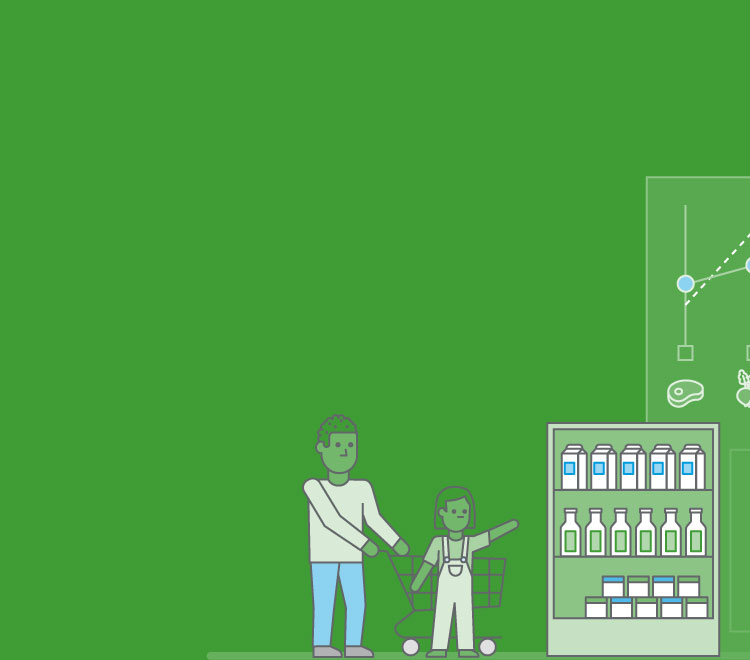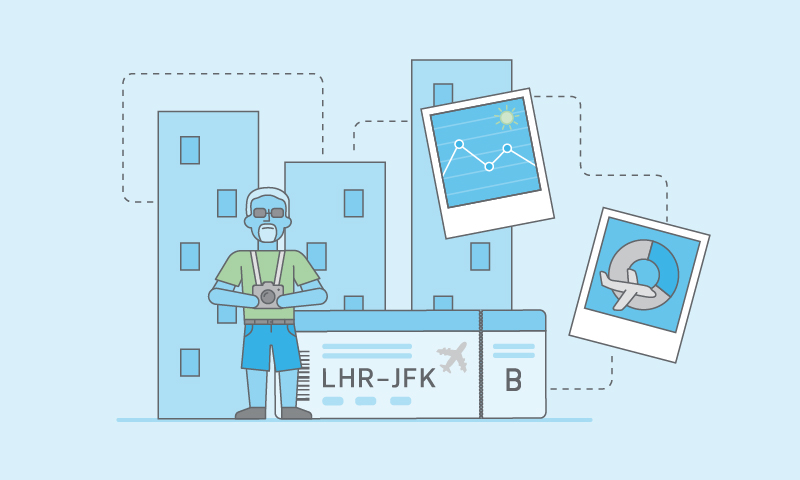04 July 2023
Our Consumer Sentiment Outlook collates the findings of a survey which polled 1000 consumers, to gauge their sentiment towards discretionary spending. Building upon our prior research conducted in November 2022 and published in January this year, our objective was to track how attitudes to spending have changed in recent months and will do so over the next three months.
Overall consumer sentiment improves
Our latest survey shows that consumers are feeling more optimistic about their finances as we move into the second half of the year. The proportion of respondents anticipating a decrease in their financial situation in the next three months is almost 10% lower than the portion of respondents who reported experiencing a decline in the previous three months. This reflects the steady recovery of consumer confidence as shown by GfK’s consumer confidence index. The index has gone from -45 at the start of the year in January, to -24, six months later in June.
While the outlook shows some improvement, with confidence still in negative territory we have arrived at a critical point in the restoration of consumer sentiment. Over the next six months, three key economic factors will influence the pace of this recovery, and whether it can be sustained.
1. How quickly inflation falls.
2. How high interest rates go.
3. Whether the UK, Europe or US go into recession.
The central theme to these three factors is inflation. With shipping and fuel prices falling sharply, it’s likely the price of goods will correlate – great news for many consumer facing businesses and, consequently, demand. However, with wage growth falling at a slower rate due to a stubbornly tight labour market, services inflation will remain stickier. As will inflation for some goods where labour is a large proportion of the overall product’s cost. Unfortunately, these two factors will drag on the recovery of inflation overall.
As a result, interest rates are on track to surpass the initial peak estimates of 6%. This is great news for savers, however, it hinders the prospects of stronger consumer spending in the second half of the year due to the delayed impact of rising mortgage rates.
Cutback trends unchanged, but consumers are more positive
There’s no escaping the fact that consumers are still being hit hard by the cost-of-living crisis and are finding ways to cut back. However, when compared to our H2, 2022 survey, the overall picture for cutting back is more positive.
Three of the top five areas where consumers will cut back: energy consumption in the home, eating and drinking out, and clothing and fashion accessories saw the best improvement in terms of sentiment in 2023 when compared with 2022. This reflects falling fuel prices, and better-than-expected performance in hospitality sales, albeit, in real terms sales remain flat against inflation as seen in the latest CGA Coffer Business Tracker. Clothing and accessory sales were also up in the first quarter of the year, with ONS reporting a rise of 2.2% in stores and 1.6% online in April 2023.
We expect hospitality and clothing spend to remain resilient, as despite facing budget constraints, 82% of consumers are determined to engage in social activities and socialise in groups in the coming three months. This reflects consumers' unwavering enthusiasm to connect and socialise, defying the financial challenges they may be experiencing.
Grocery spend is still an area of concern for many and remains one of the top five areas where consumers plan to cut back. The improvement of sentiment towards cutbacks on these goods was muted at 5%, with 25% of consumers planning to cut back on groceries in 2023, compared to 30% in 2022. However, despite the desire to cut grocery spend, when asked where they expect to spend more money in the next three months, 16% of respondents said on groceries. This of course reflects the peak in food and drink inflation which increased to 19.2% in the year to March – the sharpest 12-month increase since August 1977, according to ONS.
Recent data from ONS showed that 50% of adults said they were buying less when food shopping. This supports the notion that grocery spend is one of the first areas consumers will tackle to help manage dwindling household finances.
Food prices, especially for fruit, vegetables and sugar, have risen sharply after poor harvests in Europe and North Africa led to reduced availability earlier this year. Not only this, but the impact of bird flu – which saw birds locked inside November to April – has forced prices of eggs and poultry up. This combined with the ongoing impact the conflict in Eastern Europe is having on the price of grain, means food and drink inflation could remain sticky for some time yet. This will see the pressure on grocery spend continue as consumers keep buying less and trading down to value range products.
Summer holidays are back, but not for everyone
After several years of travel bans, consumers are reluctant to give up their time in the sun, with holidays being one of the last areas of spend respondents planned to cut back on. Reinforcing this message, our survey reveals that 68% of consumers plan to take a vacation in the next three months, rising to 77% when looking at families in isolation. Of these families, those who consider themselves to be financially comfortable are particularly prioritising holidays – with 93% having plans for one in the next three months.
This shows that experience-led spending following the pandemic is still in full swing. Especially for those with financial cushioning in the current climate. However, many will have to make sacrifices elsewhere to take their trip, with 26% of consumers who are planning to take a holiday intending to reduce spending in other areas to save money for it. Surprisingly, this percentage rises to over a third (34%) when focusing on high earners (£60K+).
On the other hand, respondents who are not financially comfortable are twice as likely to forgo a holiday, with 61% saying they will not be taking one at all. The fact that the average price of a package holiday has gone up exponentially since 2022, means that holidays abroad are increasingly becoming the privilege of more affluent consumers. For example, package holidays to Spain and Greece in summer 2023, have risen by 20% and 30% respectively, compared to 2022.
Against the backdrop of the cost-of-living crisis, where lower income households are feeling the burn most, these consumers are understandably managing their discretionary spend carefully when it comes to leisure time and holidays.
In terms of where consumers plan to visit this summer, 42% of respondents intend to take holidays overseas, and 36% plan to stay in the UK. This sentiment is somewhat concerning for UK domestic tourism, which boomed during the tail end of the pandemic.
With international holidaymakers and business travellers returning to UK shores, hotels should fare better. Data from RSM’s Hotels Tracker shows that UK hotel occupancy continues to edge closer to pre-pandemic levels month on month, with April 2023 occupancy at 72.5% compared with occupancy in 2019 which was 77.3%.
This reflects the latest ONS data which shows overseas visitors increased from 6.4 million in 2021, to 31.2 million in 2022. Though this is still 24% behind peak levels in 2019, the reopening of China’s borders promises a further boost to this number. The resumption of Chinese tourists visiting the UK will provide a significant economic stimulus to UK Hotels and the economy as a whole. Prior to the pandemic, Chinese tourists represented the second most valuable market after the US in terms of expenditure (£1.71 bn).
Conversely, UK holiday park operators, who initially witnessed a surge in demand upon emerging from the pandemic, now look to face considerable challenges. Operating within an environment of soaring costs and a decline in demand, these businesses are likely to bear the brunt of UK holiday makers returning to overseas travel. The prospects of a demand boost from foreign tourism are slim for these operators, as these visitors typically concentrate their stays in capital cities or areas of exceptional natural beauty, where they tend to favour hotel stays.
Leisure trends
Sentiment towards eating and drinking out is unchanged since our survey in 2022 and remains one of the first areas of spend consumers will cut back on. Despite this, spending in the UK hospitality sector has held up better than expected with the latest Coffer Business Tracker reporting like-for-like sales increasing by 5.6% in May.
There are also some compelling trends emerging in 2023, particularly when it comes to socialising in groups.
The top three choices for socialising in a group come as no surprise – eating out in a restaurant, having drinks in a bar or pub, or eating out in a bar or pub, all come out on top. But when we start to cut the data by demographic, there is more to unpick.
For instance, Gen Z consumers are socialising more than any other age group (95% plan to socialise in a group of three or more in the next three months, compared to 82% on average). While the top three priorities for this group are the same as those seen across the rest of the age groups, visiting the theatre or cinema (30%) and taking part in a ‘competitive’ or ‘collective’ experience (27%) came out high too. With Gen Z having missed out on key milestones and social opportunities in their formative years, it’s not surprising they are more determined to enjoy time with friends again – and perhaps have more leisure time generally. Operators that can build synergies with this generation’s value set – digitally-led, sustainable, experiential – will undoubtedly capture share of spend for this group.
What does this mean for consumer businesses?
While it’s still a challenging time for consumer facing businesses, particularly those with the greatest exposure to the inflationary climate, it’s promising that consumer sentiment is slowly stabilising. However, with interest rates now expected to surpass initial projections, many businesses will prioritize profit over growth. This emphasis is likely to persist until we have overcome the current obstacles and transitioned into a more positive economic landscape.
Get in touch
If you would like to discuss tailored solutions for your business or any of the topics set out in this article, please contact Robyn Duffy.









